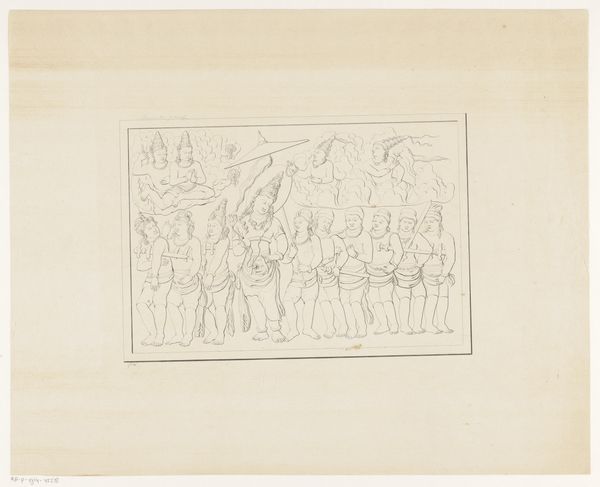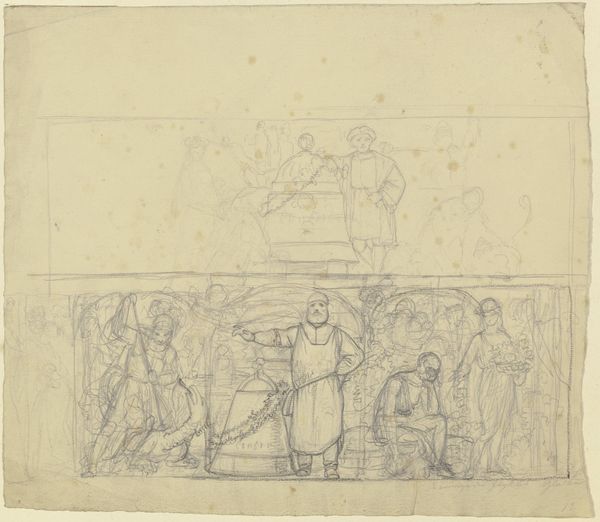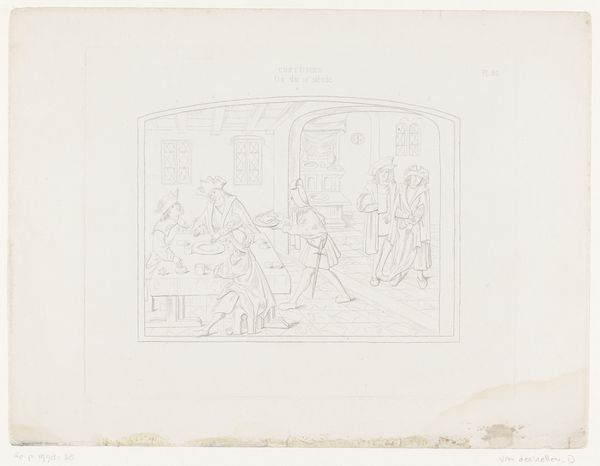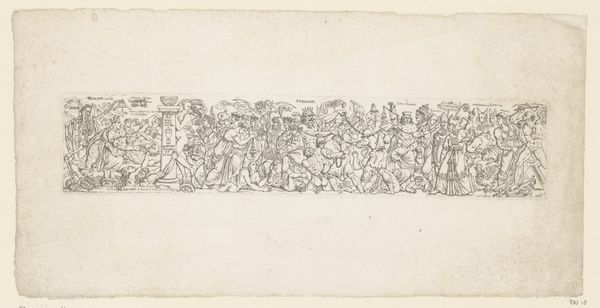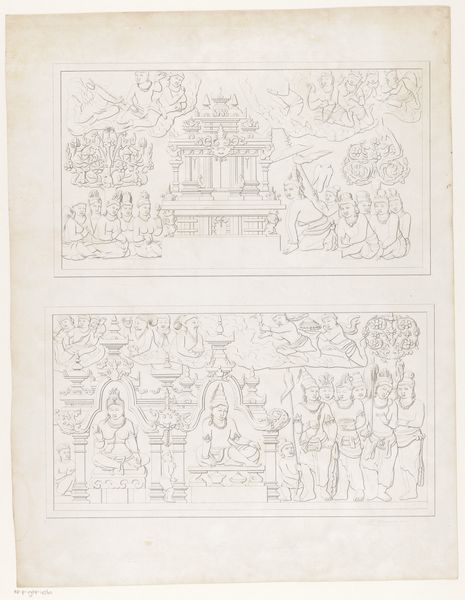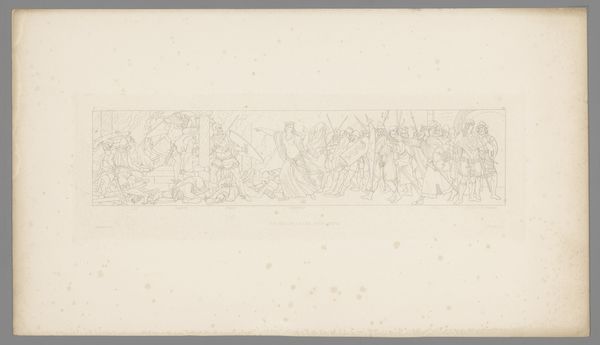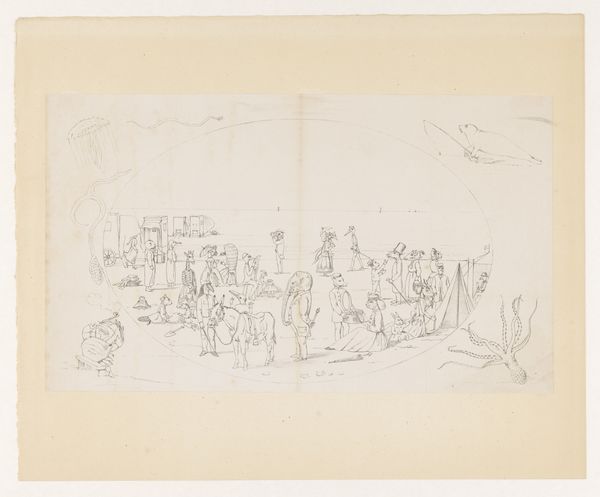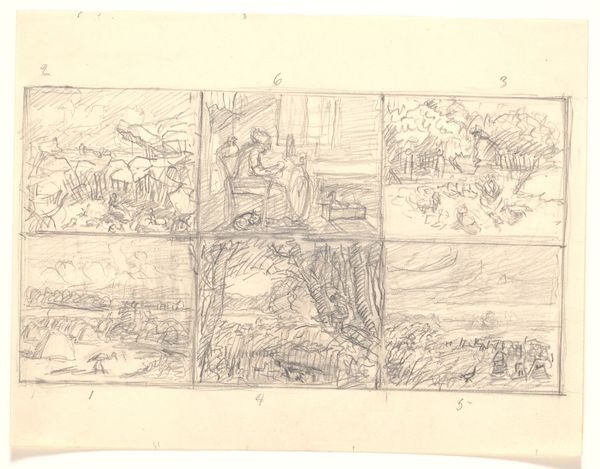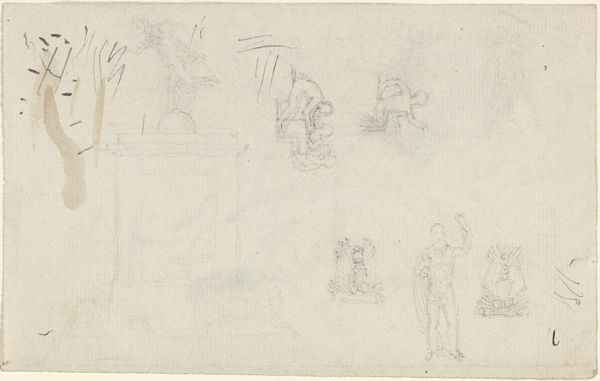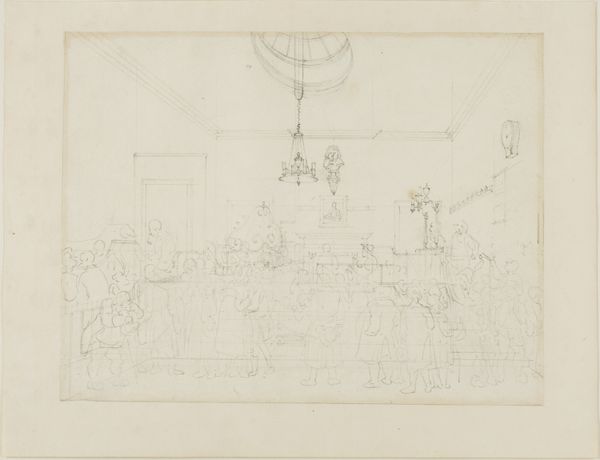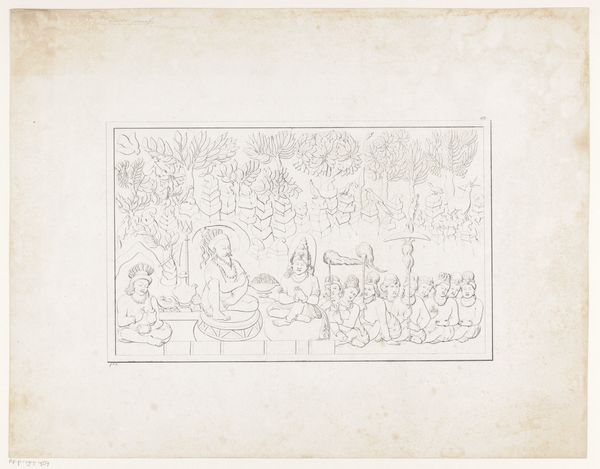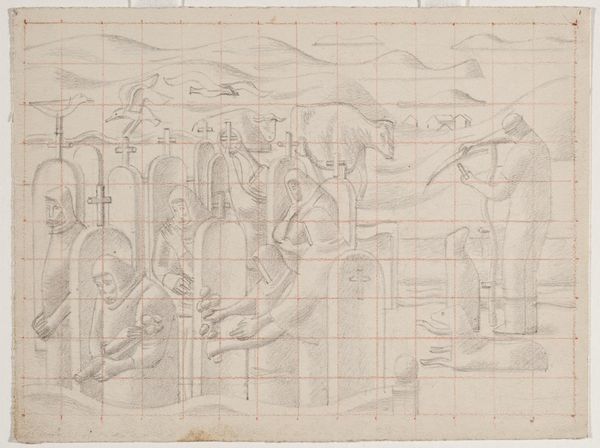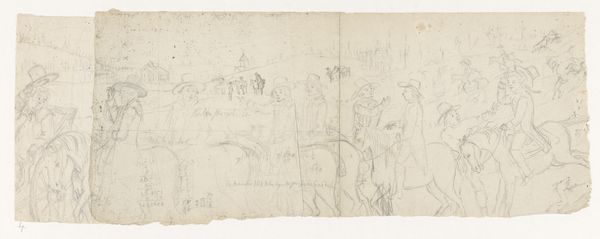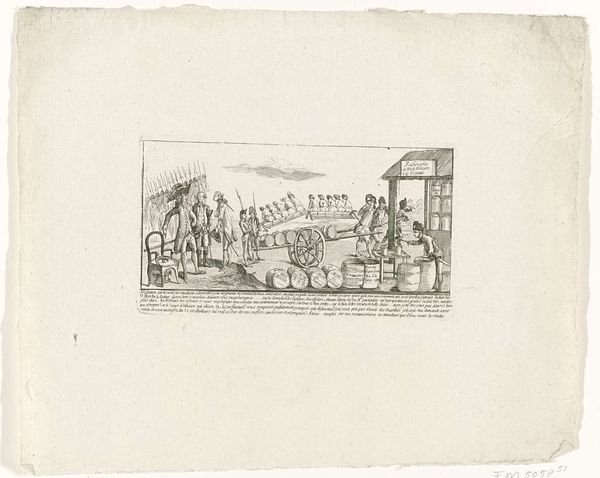
Reliëf met Boeddhistische goden, mogelijk van de tempel Candi Mendut 1836 - 1858
0:00
0:00
drawing, print, relief, ink, pencil
#
drawing
#
narrative-art
# print
#
asian-art
#
relief
#
figuration
#
ink
#
ancient-mediterranean
#
pencil
Dimensions: height 465 mm, width 305 mm
Copyright: Rijks Museum: Open Domain
Curator: This drawing captures a relief panel depicting Buddhist deities, likely originating from the Candi Mendut temple, and dating somewhere between 1836 and 1858. The artist is Andries Wiemans Cz. Editor: My first thought is how delicate the line work is. It gives the whole scene this sort of ethereal, almost ghostly quality. Curator: I see that. What’s fascinating to me is how Wiemans rendered a three-dimensional sculpture—meant to convey depth and volume—into a two-dimensional plane with such precision. We can observe how the linear strokes work, creating different planes with architectural and botanical life as well as divine entities. Editor: It makes me wonder about the purpose of such detailed documentation. Was it simply for record-keeping, or was there something more, perhaps a desire to make these religious artifacts more accessible? In the colonial era of the 19th century, whose gaze did this documentation serve? Curator: Good questions! Perhaps it speaks to the rise of Orientalism during this time period. There's a deliberate gaze toward the spiritual east here—almost voyeuristic. But then, on another level, you could say there's also something quite respectful about Wiemans’ careful representation. The flow of figures creates movement while simultaneously presenting stillness of being. It's interesting that such linear marks and almost sterile rendering contain so much nuance! Editor: I'm struck by the diversity in the representation of deities, each with their distinct features, attire, and gestures. This artwork shows the diversity and variety of cultural and artistic representations, as well as the significance of representation within those spiritual and cultural narratives. Curator: It also encourages discussions about representation in relation to class and status. Notice how the elites, rendered with umbrellas over their heads, command the panel, almost literally rising above those under them. It's definitely a marker of wealth, but also points to how some communities historically leveraged symbols to communicate social stature. Editor: This image encourages contemplation on how documentation functions as a lens through which historical cultures can be made to signify a politics that is far removed from its source context. Curator: Precisely! A piece that asks far more questions than it provides answers, I’d say. Editor: Agreed. It serves as a portal into our thinking about the past, present and future, which is powerful.
Comments
No comments
Be the first to comment and join the conversation on the ultimate creative platform.
